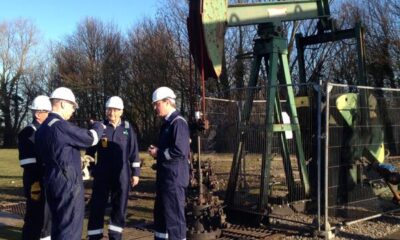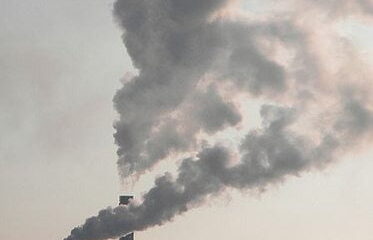

Environment
The Shocking Environmental & Safety Concerns of Fire Fighting Foam
Firefighting foam, a staple in the arsenal of emergency responders, has long been hailed as one of the greatest innovations in the battle against blazes. It smothers flames, cools the fire, and prevents re-ignition.
However, like most other things that seem too good to be true, there’s a darker side to this unsung hero of the firefighting world. The environmental and safety concerns surrounding firefighting foam are shocking, and they demand our attention.
A Lifesaver With A Dark Side
Imagine a massive fire at an oil refinery. Flames leap high into the air, and thick black smoke billows into the sky. Enter firefighting foam. Within minutes, the foam blankets the fire, cutting off its oxygen supply and reducing the heat.
The blaze is tamed, and disaster is averted. It’s a scene that’s played out countless times, and each time, the foam is hailed as a lifesaver.
But what happens after the fire is out? That’s where the story takes a grim turn, with countless stories of irreparable destruction caused by AFFF exposure in the environment, and equally devastating consequences when it comes to people’s health, which have since prompted countless fire fighting foam lawsuits.
The Toxic Legacy of AFFF
Aqueous Film Forming Foam (AFFF) is a common type of firefighting foam. It’s particularly effective against fuel fires, which is why it’s widely used at airports, military bases, and industrial sites. However, AFFF contains chemicals known as per- and polyfluoroalkyl substances (PFAS).
These chemicals are incredibly persistent, earning them the nickname “forever chemicals.”
PFAS are not just an environmental concern; they’re a health concern too. Studies have linked them to a range of health issues, from cancer to hormone disruption, and because they don’t break down easily, they accumulate in the environment and in our bodies.
In Oscoda, Michigan, the use of AFFF at the former Wurtsmith Air Force Base has led to widespread PFAS contamination. The chemicals have been found in the groundwater, surface water, and even in the foam that occasionally washes up on the shores of nearby Lake Van Etten.
Residents have since been advised not to eat fish from the lake, and many rely on bottled water due to concerns about their wells. The situation in Oscoda is a stark example of the long-lasting impact of PFAS and the challenges of addressing such contamination.
Wildlife At Risk
Beyond human concerns, the natural world is also under siege from PFAS contamination. Aquatic ecosystems, especially, bear the brunt of this chemical assault. PFAS-tainted waterways have reported fish exhibiting liver damage, altered blood chemistry, and hindered reproductive capabilities.
In the early 2000s, researchers found that fish in the Mississippi River near the Twin Cities had unusually high levels of PFAS. This was linked to discharges from a 3M manufacturing facility.
Elevated PFAS levels in fish can lead to various health issues, including liver damage and reproductive problems. As a result, the Minnesota Department of Health has issued fish consumption advisories for certain species in affected areas.
Similar impact can be seen on Greenland’s polar bears, and the handful of bald eagles still around in New Jersey.
This makes the increasing use of PFAS in fire suppression systems a major threat to the micro and macro ecosystem, something that needs to be put an end to right away, in order to prevent it from spiraling into a problem of catastrophic proportions.
The Alternatives & The Road Ahead
The mounting concerns over firefighting foam have catalyzed a search for safer alternatives. Many fire departments are transitioning to fluorine-free foams, sidestepping the problematic PFAS chemicals.
These alternatives, derived from natural sources or less harmful synthetic compounds, have shown promise in various fire scenarios. However, their efficacy in combating large-scale fuel fires remains a topic of debate among experts.
Yet, merely adopting new foams isn’t a panacea. The legacy of PFAS, with its stubborn persistence, lingers in our environment. Remediation efforts are essential. Cleaning up sites contaminated by decades of PFAS use is both a technical and logistical challenge.
Moreover, there are calls for stricter regulations, ensuring that new products introduced don’t pose similar threats in the future. Collaboration between industries, researchers, and policymakers will be pivotal in charting a safer path forward.
Conclusion
Firefighting foam, for all its life-saving prowess, has left a toxic legacy in its wake. The environmental and safety concerns surrounding it are a stark reminder that sometimes, the solutions to our problems can create new challenges of their own.
With awareness, innovation, and community action, however, we can address these challenges and ensure that both people and the planet are protected, and solve some of our most pressing issues, without ignoring the externalities of our solutions.


 Environment10 months ago
Environment10 months agoAre Polymer Banknotes: an Eco-Friendly Trend or a Groundswell?

 Environment11 months ago
Environment11 months agoEco-Friendly Home Improvements: Top 7 Upgrades for 2025

 Features9 months ago
Features9 months agoEco-Friendly Cryptocurrencies: Sustainable Investment Choices

 Features10 months ago
Features10 months agoEco-Friendly Crypto Traders Must Find the Right Exchange



























